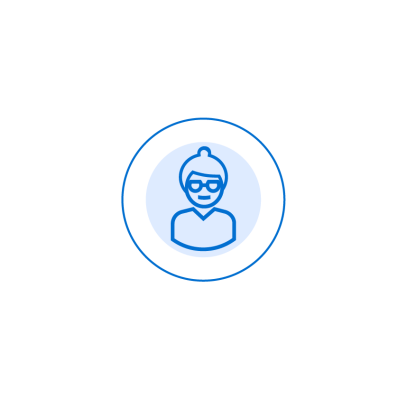

Better openEHR Digital Health Platform
A next-generation technology that uses open data and low-code tools to transform patient care.
0 h
saved annually on administrative tasks*
0 %
reduction in hospital readmissions*
0 x
less time spent on application development*
0 %
less unnecessary outpatient appointments*
Our mission is to improve health and care by simplifying the work of care teams and accelerating digital transformation underpinned by data for life. Using our low-code platform, we build personalised digital user experiences on top of a vendor-neutral clinical data repository.
Data fabric
The vendor-neutral health data fabric opens up data while considering security and privacy, giving clinicians access to patient data and making it available when and where they need it.





Open standards at the core
Our data repository unifies all patient clinical and demographic information using openEHR and FHIR standards, and binds it to a multitude of terminologies. Comes with a query language and standard APIs for bi-directional communication. A unique two-level architecture ensures data consistency while allowing for use-case variation.
Full privacy of patient data
Our attribute-based access control system offers fine-grained settings, allowing precise access levels for different users and ensuring highest level of security and data privacy. Every action is tracked with our built-in audit log feature to keep it secure.
Accessible and open
Integration services support the integration of systems and components through various mechanisms such as FHIR Connect and IHE stack. Incoming messages are transformed and stored in the data fabric, which other systems may then use via standard APIs or via ETL. Through our partnership with Lyniate we provide connectors to major EHR vendors.
Advanced services
Better Platform includes a set of components that accelerate the development of backend services. Events can to act on data in real-time, Data Views are solving the complexity of clinical screens and patient summaries, while Cohorts take care of multi-patient management complexity.
Interoperability by design
A healthcare-specific data model that standardises the way information is organised, allowing different systems to share and understand patient information easily. Data models come with several constraints and rules out of the box, meaning the data quality is already checked at the very core of the platform.
Low-Code
The healthcare-specific low-code tools accelerate the development process compared to standard development tools. With the help of a drag-and-drop UI, no coding is needed, allowing clinicians to create applications precisely as they want.




Clinical modelling made easy
A web-based clinical modelling tool for openEHR model development that enhances productivity and simplifies data modelling tasks. It allows visual authoring of clinical models, archetypes and templates, including full archetype parsing, validation, flattening, and serialisation, all in a user-friendly environment.
No coding skills required
With no-code App builder, citizen developers can create and deploy clinical applications quickly and without any code. App builder supports simple and complex data entry forms and clinical data visualisations. Forms can be customised and aligned with other applications’ graphic design and UX.
Access data with ease
A low-code tool that helps query and analyses EHR data. It provides an interface for creating and running database queries and makes building applications easier. It offers autocompletion and validation before the actual execution, history of previous queries, and storing reusable snippets.
Pre-built widgets and apps
Better Platform comes with several predefined widgets and applications ready to be customised and used, plug and play. Graphs, charts, scales, scores, viewers, all the way to a full blown applications such as medication management or clinical decision support with hundreds of use-case available.
User Experience
A clinical portal and a design system truly live our mission to simplify the work of healthcare professionals. It is a continuous effort by our design team to create a unified experience across different products and tools.



Instant access to all patient information
A configurable, web-based portal gives each member of care team member instant access to relevant patient information presented comprehensively. It can be composed of different sets of modules, developed by different vendors, based on the user’s needs and roles. Accessible from any device at any time.
Built with healthcare professionals
A design system is a collection of reusable components, guided by standards, that can be assembled to build a number of applications. Design system enables more efficiency, consistency, and readiness to scale. It consists of four parts: application building components, clinical data visualisation system, clinical forms, and content style guide.
Structuring free text
SNOMED CT linker takes any form of a free-text clinical document as input and returns a list of identified clinical concepts. Using the natural language processing, it understands the documents’ content and matches millions of concepts in a near instant. It improves the flow of relevant information and communication, and lowers the administrative burden.

"A collaborative and data-first approach can bring great outcomes"
The care is shifting from hospitals to regions, communities, and homes, services must be designed around the patient and not organisations, and providing enough digitally skilled people are the three challenges that are shaping healthcare industry at the moment. Matt Cox, our Managing Director UK & Ireland, sat down with HETT Show and discussed the shift in care, tailored processes for patients, and the workforce in digital health. Read the whole interview below.Tell us …
“Platforms standardise the way information is captured and provide you with a controlled environment which gives tools, capability, and information modelling provision to information specialists and clinicians. Plus, it has a standard attached to it – openEHR.”

